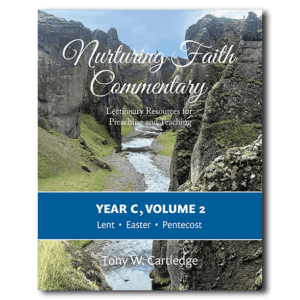
Oct. 8, 2021, marked for around 1,100 civil society organizations a success long battled for.
For years, the activists of these organizations have been campaigning for an understanding that every human being should have a right to live in a safe, clean, healthy and sustainable environment.
And now it has happened – the United Nations (UN) Human Rights Council in Geneva passed a resolution stating that access to a healthy and sustainable environment is a universal human right.
David Boyd, the UN Special Rapporteur on Human Rights and Environment, underlines the importance of this resolution: “We need this … because it says to every government in the world ‘you have to put human rights at the centre of climate action, of conservation, of addressing pollution and of preventing future pandemics.’”
With the passing of this resolution, there is much to rejoice about.
In the face of a deteriorating environment, it can be used as another tool to protect our “support system” — fertile land, clean air and pure water.
All these elements are essential for human beings to live on the earth. Yet, many places lack these.
The World Health Organisation (WHO) reports that 24% of all global deaths are somehow related to the polluted and damaged environment.
These are sobering statistics. It sheds light on the extent of human suffering caused by mismanagement of our natural environment.
Yet, the question remains whether this resolution can achieve more than we have managed to accomplish until now.
It is worth remembering that the first UN Conference on the Human Environment took place in 1972 in Stockholm, Sweden. Its declaration was adopted by 113 governments and received by several inter-governmental and non-governmental organizations.
Fifty years – more than one generation – has passed since the first major UN environmental conference urged governments to take action for sustaining and protecting the natural environment, an integral part of people’s well-being.
Yet, how much has changed since then?
It is ironic that, on the one hand, we are resolved to sort out the problems of global pollution, loss of biodiversity and accumulative climate change; yet, on the other hand, the main concern of the majority of governments is economic growth.
Economic growth, benefitting human beings, seems to have become the key to defining a good life. Increasing personal income gives access to (better) education, (better) health services and (more) comfortable living.
Even when the word “sustainable” has preceded the term “economic growth,” the emphasis remains on economic considerations and growth.
There seems to be nothing to stop this vicious cycle of production and consumption, a perpetuum mobile of the continued destruction of the earth, including human communities.
Even if we declare that a healthy and sustainable environment is a universal human right, I am afraid that without giving up the idea of an ever-growing economy this dream will never become true.
Therefore, I believe that, in order to bring any change into such utterly harmful practices, the way we think and talk about the good life needs to be completely transformed.
We need to move from the egocentric strive for economic growth to embracing life-giving relationships in the entire created order. This is where Christian faith and tradition has every potential to lead the way and become a prophetic act in society.
The ultimate example of life-giving relationships is the biblical story of the relationship between the Creator and creation – “For God so loved the world that he gave his one and only son” (John 3:16).
For the Creator to become a part of the created order – Jesus was flesh and blood like you and me – is the highest expression of self-sacrificial and life-giving relationship.
Such a relationship exemplifies giving rather than receiving and demonstrates sacrifice rather than gain. And ultimately this relationship inaugurated God’s saving act for the entire creation.
Life-giving and self-sacrificial relationships characterize every healthy family. Perhaps this is the reason why Saint Francis (12th–13th century) used the image of the “family” to talk about the created order.
His “Canticle of the Creatures” sketches an abundant image of God’s household — brothers sun, wind and fire, sisters moon, stars and water, mother earth and even sister bodily death — all together, including human beings, forming the mystery of life created by the Most High.
Pope Francis makes a connection between this old canticle and contemporary attitudes toward creation, saying that the way we view creation defines the way we behave towards it in his Encyclical Letter “Laudato Si.”
Contemporary science has also established that the world we live in is a “family.” The scientific word for it is “ecosystem,” and the keywords of this concept are interdependence and mutuality at all levels, including us as human beings.
Of course, a joyful celebration should also be part of a good family life. But who wants to live in a family where there is an excessive party in one room of the house, and suffering in the other?
Sadly, this is our current reality – one part of the world enjoying economic growth and getting richer and richer, the other part lacking clean drinking water and healthy living conditions.
Yet, I believe it can change if we are ready to truly follow Jesus and, like him, embody life-giving and self-sacrificial relationships in everything we do.
I believe this is the test of our discipleship.
Editor’s note: This article is part of a series this week calling attention to the United Nations’ Human Rights Day (Dec. 10). The other articles in the series are:
The Persistent Widow and the United Nations | Wissam al-Saliby
Words Alone Won’t Secure Human Rights, Address Climate Crisis | David Wheeler
Humans Right Day: A Proclamation of Freedom for All | Jaziah Masters
Rights of Indigenous Peoples Declaration Reveals Church Complicity | Jodi Spargur




